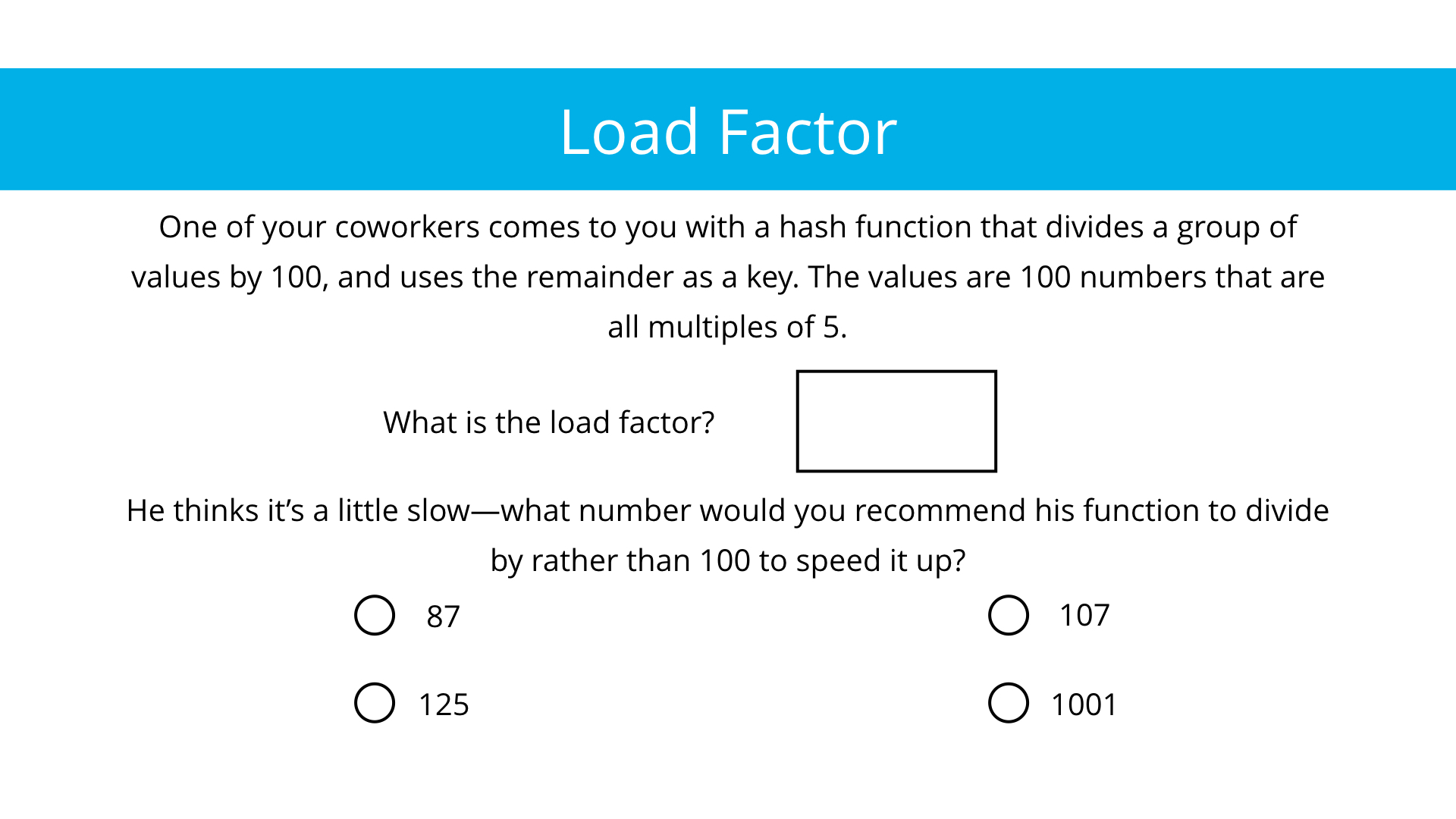07. Load Factor
Load Factor
Question:
When we're talking about hash tables, we can define a "load factor":
Load Factor = Number of Entries / Number of Buckets
The purpose of a load factor is to give us a sense of how "full" a hash table is. For example, if we're trying to store 10 values in a hash table with 1000 buckets, the load factor would be 0.01, and the majority of buckets in the table will be empty. We end up wasting memory by having so many empty buckets, so we may want to rehash, or come up with a new hash function with less buckets. We can use our load factor as an indicator for when to rehash—as the load factor approaches 0, the more empty, or sparse, our hash table is.
On the flip side, the closer our load factor is to 1 (meaning the number of values equals the number of buckets), the better it would be for us to rehash and add more buckets. Any table with a load value greater than 1 is guaranteed to have collisions.
Start Quiz:

Solution:
For the load factor, you should divide the number of values by the number of buckets. There are 100 values, as stated in the question, and 100 buckets (0 to 99). Thus, 100/100 = 1!
The answer to the second part is 107. The other values all had something wrong with them:
-
125 is also a multiple of 5. Dividing a bunch of multiples of 5 by another multiple of 5 will cause a lot of collisions. Here's an example, where 10 is used as the divisor:
- 5 % 10 = 5
- 10 % 10 = 0
- 15 % 10 = 5
- 20 % 10 = 0
- 87 is better than 125, but because it's less than 100 it'll still have collisions.
- 1001 is good, but it'll create a ton of leftover buckets and waste a lot of memory.